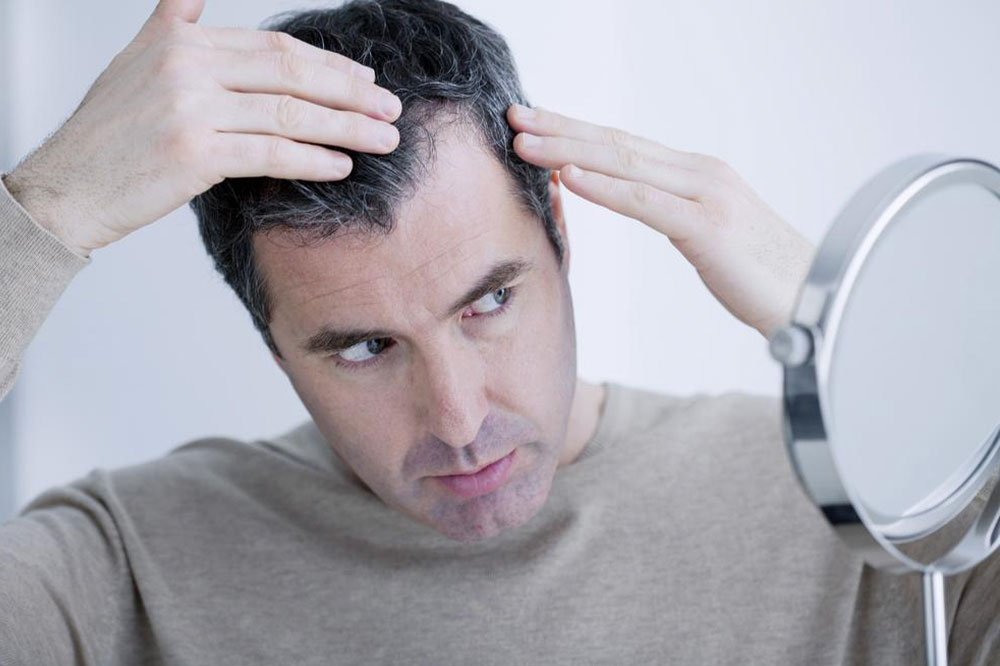
Top Symptoms and Stages of Male Pattern Baldness
Not all symptoms are a cause for concern, but a receding hairline makes most people hit the alarm almost immediately. Baldness is associated with mostly negative connotations and this had led to it being one of the top-most cosmetic concerns among men and women. Male pattern baldness has a lot of causes, but genetics and environmental reasons are possibly primary ones.
Losing a few strands of hair every day isn’t a reason to worry but if you notice a substantial loss of hair over a prolonged period, it may be time to visit a doctor. Here are some of the top symptoms of male pattern baldness.
- Excessive loss or thinning of hair
Baldness is the complete or partial loss of hair from the scalp. It can be noticed if you are recovering from an illness, or due to hormonal changes and certain medications. Radiation therapy and sudden stress can also trigger excessive hair loss, along with some hairstyles and treatments. However, this will be temporary. If you have not undergone any of these situations, but still go through excessive hair loss and thinning, it could be a symptom of male pattern baldness.
- Receding hairline and thinning of hair
A gradual thinning of hair results in a reduced density of hair and the hairline starts receding at the temples. If you notice a steady and slowly receding hairline at the temples, it is probably a symptom of male pattern baldness.
- Balding at the top of the hair
Also known as alopecia areata, this condition causes loss of hair at the top of the head or the crown area. It can be noticed in people who have asthma, hay fever, vitiligo, Down syndrome, or anemia. In some cases, the lack of vitamins can also result in hair loss. This is usually temporary and the hair will grow back within a year. If you do not have any of these health conditions but still notice a bald patch at the top of your head, it could be a symptom of male pattern baldness, requiring treatment.
Apart from these specific symptoms, a progressive thinning of hair and reduced length of hair are also symptoms male pattern baldness
Stages of male pattern baldness
In the beginning and in the early stages of balding, hair starts to recede from the front and top of the head. As it progresses, the back of the head is also affected, while the sides may or may not be.
- Stage 1: When there is no hair loss and the scalp is full of thick and dense hair.
- Stage 2: When you can see the hairline receding very minutely in the front and at the temples.
- Stage 2A: When the hairline starts receding faster at the front.
- Stage 3: When the hairline starts receding quickly at the temples.
- Stage 3A: When the frontal hairline starts receding fast and almost all the hair in the front is lost.
- Stage 3B: Along with the loss of frontal hair, you will start noticing a loss of hair at the top of your head (the crown).
- Stage 4: When the hair loss crosses the top of the head and progresses to the back of the head.
- Stage 5: When the hair at temples also starts receding and the bald patch in the crown too grows bigger.
- Stage 5A: When the balding patches of the front and the top merge and continue to progress.
- Stage 5B: The bald part of the crown is growing but has not merged with the balding at the front.
- Stage 6: There will be hair in the sides of the head but the top and front are almost bald.
- Stage 7: The sides of the head are also affected and there is only a ring of hair left.
Once you have a grip on the symptoms and stages of balding, you can look for treatments and remedies accordingly.



